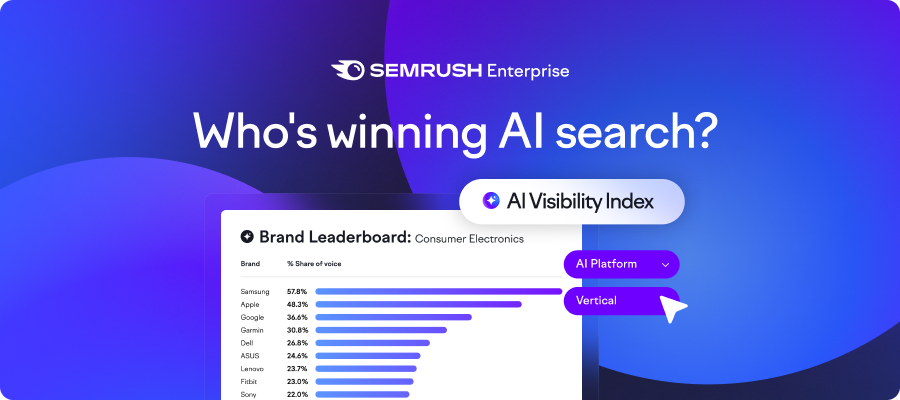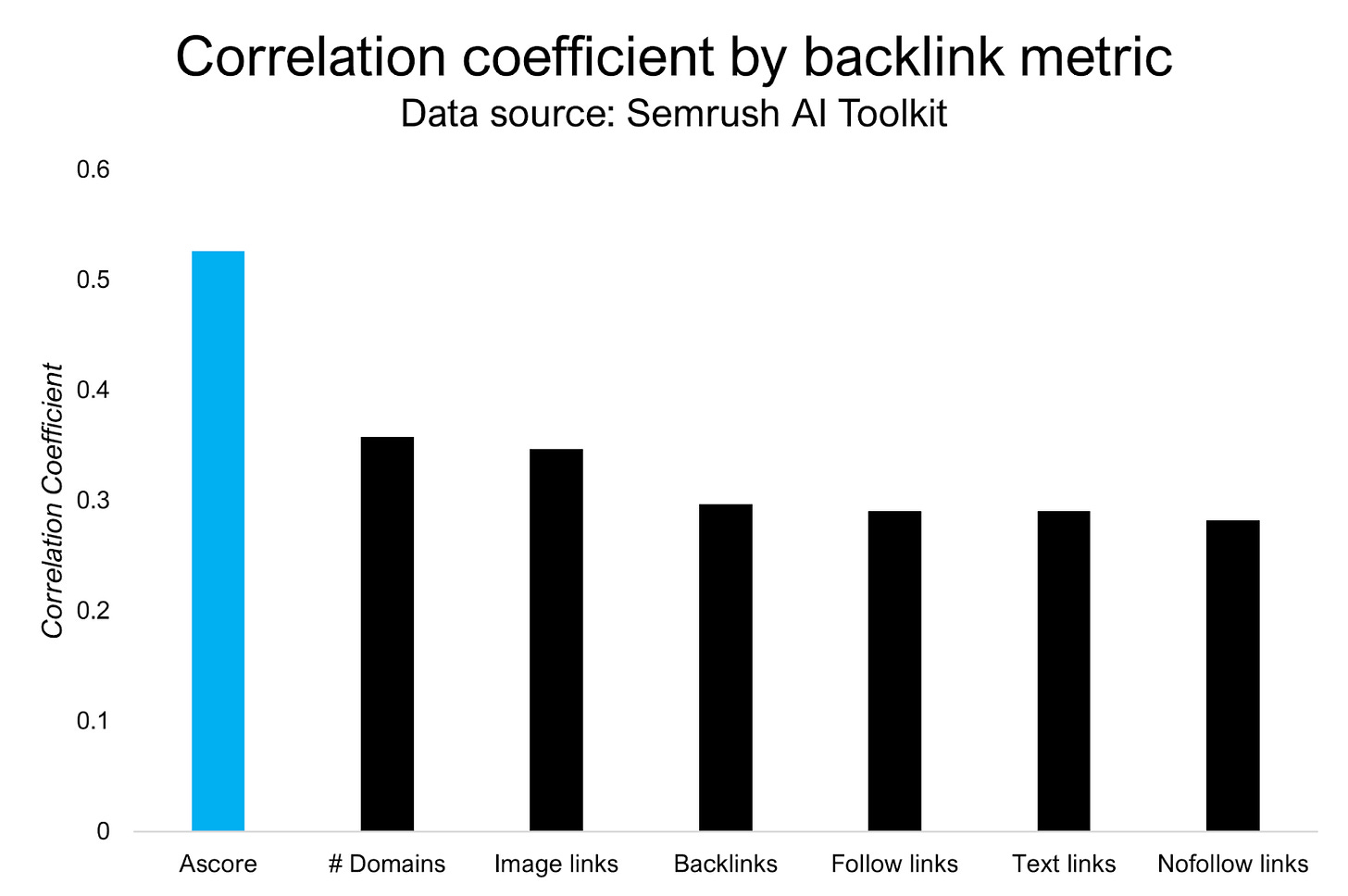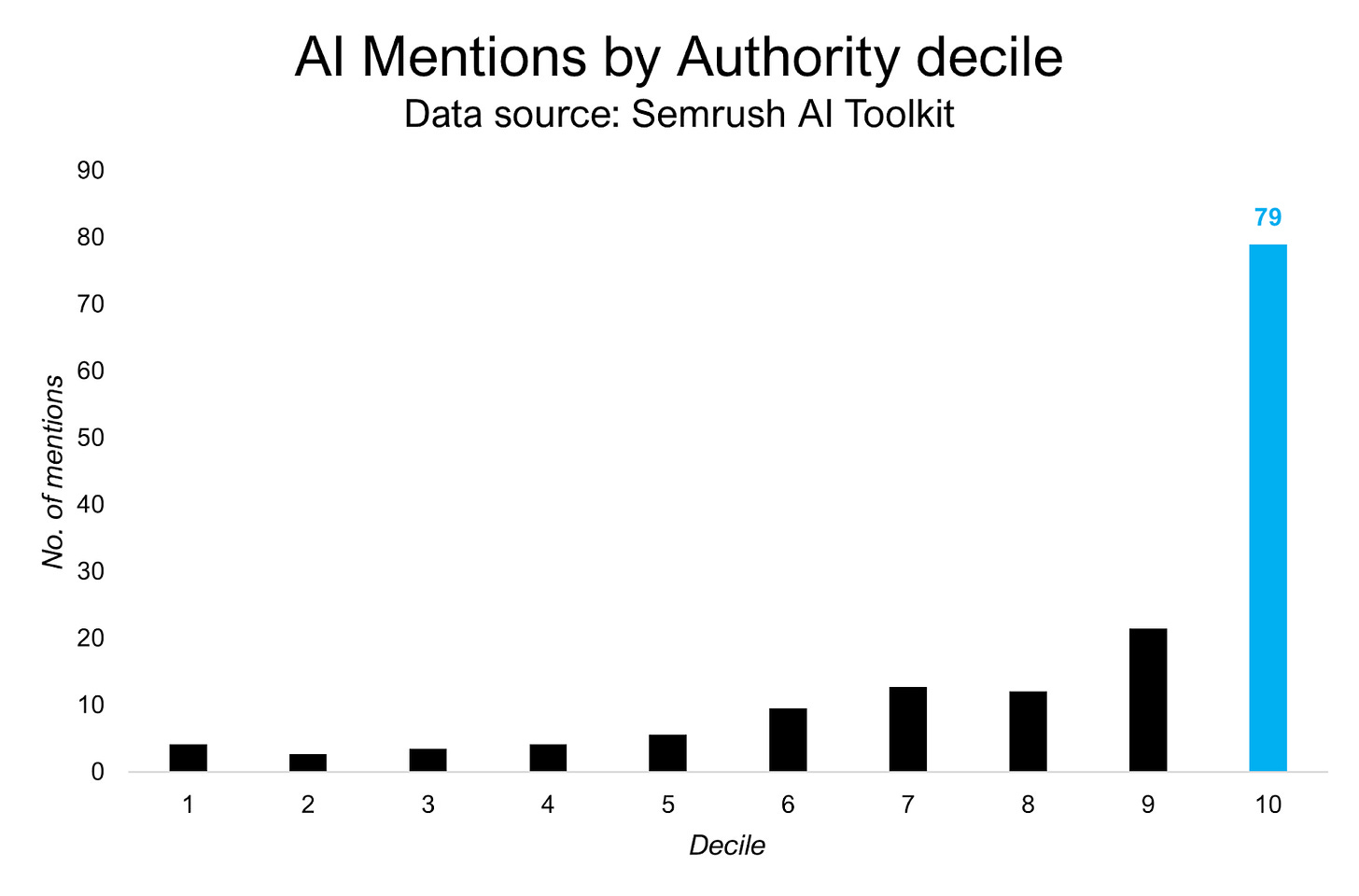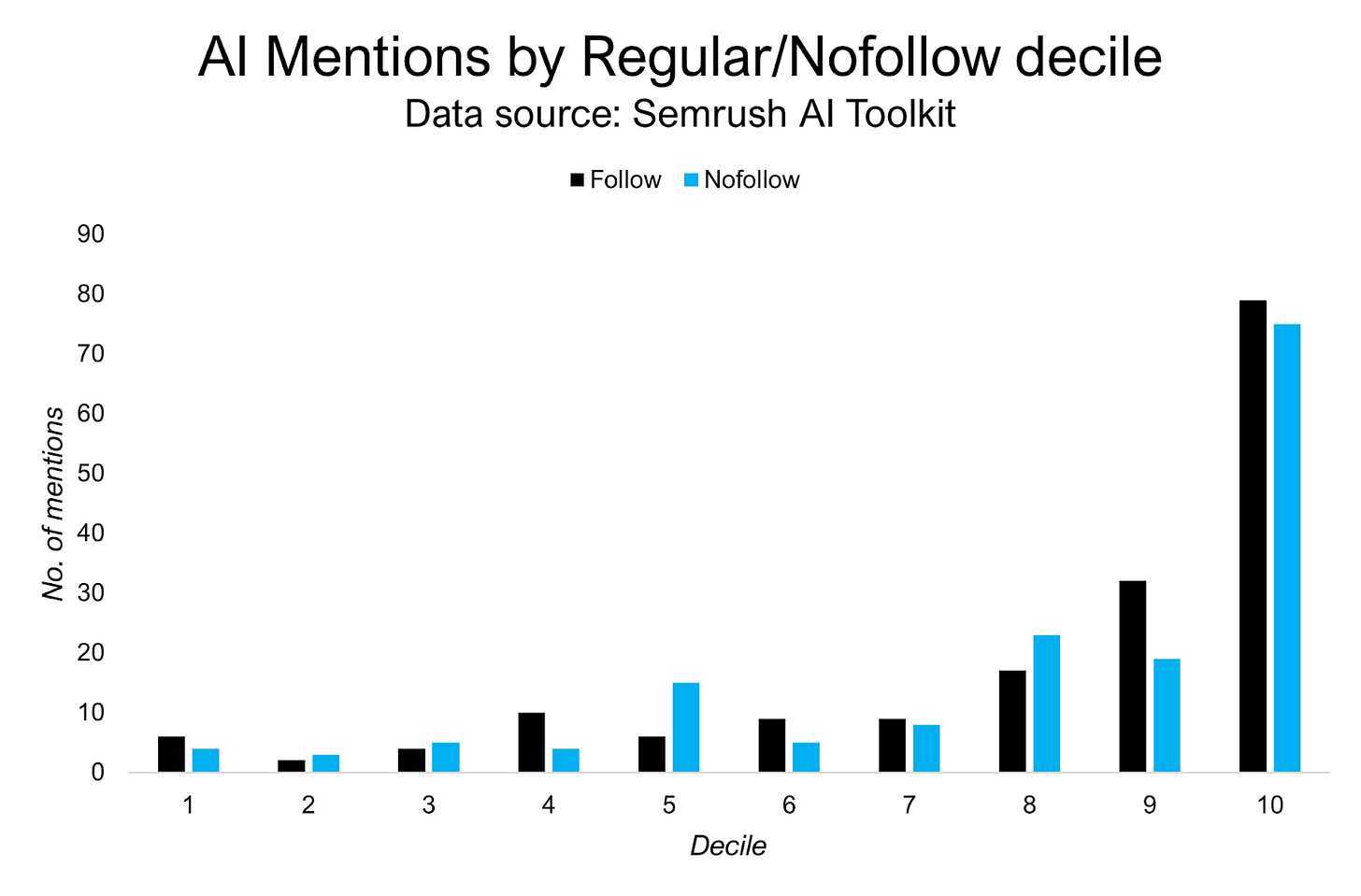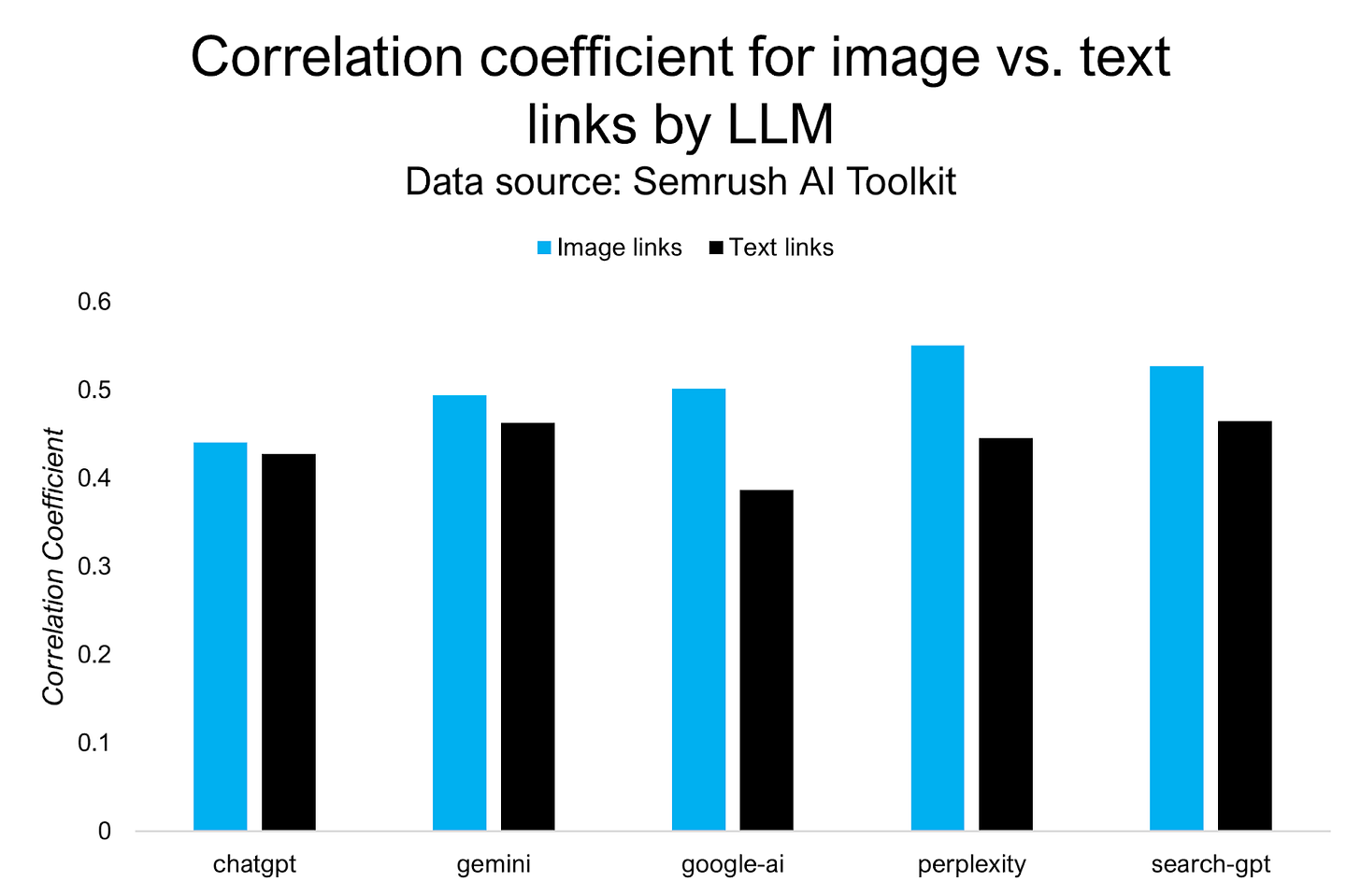How AI Really Weighs Your Links (Analysis of 35,000 datapoints)
No one has ever dug deep into the impact of backlinks on AI Visibility. Until Now. I found surprising insights that should define your backlink strategy.
Semrush backlinks study
This Memo was sent to 20,813 subscribers. Welcome to +96 new readers! You’re reading the free version of Growth Memo. Premium subscribers get deeper strategy breakdowns, original research, and exclusive content drops.
Before we jump in:
I hate to brag, but I will say I’m extremely proud to have placed 4th in the G50 SEO World Championships this past week 🙌🏻
I’m speaking at NESS, the global News & Editorial SEO Summit, on October 22nd. Growth Memo readers get 20% off when code “kevin2025”
Historically, backlinks have always been one of the most reliable currencies of visibility in search results.
We know links matter for visibility in AI-based search, but how they work inside LLMs - including AI Overviews, Gemini, or ChatGPT & Co.- is still somewhat of a black box.
The rise of AI search models changes the rules of organic visibility and the competition for share of voice in LLM results.
So the question is, do backlinks still earn visibility in AI-based modalities of search… and if so, which ones?
If backlinks were the currency of the pre-LLM web, this week’s analysis is a first look at whether they’re still legal tender in the new AI search economy.
See Which Brands Are Winning AI Search (And Their Tactics)
Semrush Enterprise’s AI Visibility Index is an interactive look at the brands leading AI search - tracking thousands of prompts from ChatGPT and Google AI Mode in 5 key industries. Built with their AI Optimization platform.
The AI Visibility Index is completely free and gives you the blueprint for thriving in AI search. Explore topics like:
Which brands lead in each industry
Who gets mentioned in AI vs. who it cites
Why Patagonia, Garmin, and others are scoring AI search wins
Until now, data proving what drives AI brand visibility has been extremely limited. It’s an AI search game-changer.
Together with Semrush, I analyzed 1,000 domains and their AI mentions against core backlink metrics.
The data surfaced 4 clear takeaways:
Backlink-earned authority helps, but it’s not everything.
Link quality outweighs volume.
Most surprisingly, nofollow links pull real weight.
Image links can move the needle on authority.
These findings help us all understand how AI models surface sites, along with exposing what backlink levers marketers can pull to influence visibility.
Below, you’ll find the methodology, deeper data takeaways, and for premium subscribers, recommendations (with benchmarks) to put these findings into action.
Methodology
For this analysis, I looked at relationships between AI mentions for 1,000 randomly selected web domains. All data is from the Semrush AI SEO Toolkit, Semrush’s AI visibility & search analytics platform.
Along with the Semrush team, I examined the number of mentions across:
ChatGPT
ChatGPT w/ Search activated
Gemini
Google’s AI Overviews
Perplexity
(If you’re wondering where Claude.ai fits in in this analysis, we didn’t include it at this time as its user base is generally less focused on web search and more on generative tasks.)
For the platforms above, we measured Share of Voice and the number of AI mentions against the following backlink metrics:
Total backlinks
Unique linking domains
Follow links
Nofollow links
Authority Score (a Semrush metric referred to as Ascore below)
Text links
Image links
How to understand this analysis: Pearson vs. Spearman data correlation
In this analysis, I used 2 different ways of measuring correlation across the data: a Pearson correlation and a Spearman correlation.
If you are familiar with these concepts, skip to the next section where we dive into the results.
For everyone else, I’ll break these down so you have a better understanding of the findings below.
Both Pearson and Spearman are correlation coefficients - numbers between -1 and +1 that measure how strongly 2 different variables are related.
The closer the coefficient is to +1 or -1, the more likely and stronger the correlation. (Near 0 means weak or no correlation at all.)
Pearson’s r measures the strength and direction of a linear relationship between two variables. Pearson looks at a linear correlation across the data using the raw values. This way of measuring is sensitive to outliers. But, if the relationship curves or has thresholds, Pearson under-measures it.
Spearman’s ρ (rho) measures the strength and direction of a monotonic relationship, or whether values consistently move in the same or opposite direction, not necessarily in a straight line. Spearman looks at rank correlation across the data. It asks whether higher X tends to come with higher Y; Spearman correlation asks: “When one thing increases, does the other usually increase too?”. It’s a correlation that is more robust to outliers and accounts for non-linear, monotonic patterns.
A gap between Pearson and Spearman correlation coefficients can mean the gains are non-linear.
In other words: There’s a threshold to cross. And that means the effect of X on Y doesn’t kick in right away.
Examining both the Pearson and Spearman coefficients can tell us if nothing (or very little) happens until you pass a certain point - and then once you exceed that point, the relationship shows up strongly.
Here’s a quick example of what an analysis that involves both coefficients can reveal:
Spending $500 (action X) on ads might not move the needle on sales growth (outcome Y). But once you cross, say, $5,000/month (action X), sales start growing steadily (outcome Y).
And that’s the end of your statistics lesson for today. 🎓📝
Takeaway 1: Authority matters for AI mentions, but it’s just a piece of the puzzle
The first signal we examined was the strength of the relationship between the number of backlinks a site gets versus its AI Share of Voice.
Here’s what the data showed:
Authority Score has a moderate link to Share of Voice (SoV): Pearson ~0.23, Spearman ~0.36.
Higher authority means higher SoV but the gains are uneven. There’s a threshold you need to cross.
Authority supports visibility, yet it does not explain most of the variance. What this means is that backlinks do have an impact on AI visibility, but there is more to the story, like your content, brand perceptions, etc.
Also, the number of unique linking domains matters more than the total number of backlinks.
In plain terms, your site is more likely to have a larger SoV when you have links from many different websites than a huge number of links from just a few sites.
Takeaway 2: Quality > volume
Across all models, the strongest relationship occurred between Authority Score (0.65 Pearson, 0.57 Spearman) and the number of mentions
Here’s how Semrush defines the Authority Score measurement:
Authority Score is our compound metric that grades the overall quality of a website or a webpage. The higher the score, the more assumed weight a domain’s or webpage’s outbound links to another site could have.
It takes into account the number and quality of backlinks, organic traffic to link source pages, and the spamminess of the link profile.
Of course, Ascore is just a proxy for quality. LLMs have their own way of arriving at backlink quality. But the data shows that we can use Semrush’s Ascore as a good representative.
Most models value this metric equally for mentions, but ChatGPT Search and Perplexity value it the least compared to the average.
Surprisingly, regular ChatGPT (without search activated) weighs Ascore the most out of all models.
Critical to know: Median mentions jump from ~21.5 in decile 8 to ~79.0 in decile 9. The relationship is non-linear. In other words, the biggest gains come when you hit the upper boundaries of authority, or Ascore in this case.
(For context, a decile is a way of splitting a dataset into 10 equal parts. Each segment, or decile, contains 10% of the data points when they’re sorted in order.)
Takeaway 3: Nofollow links have the same impact as regular links
Perhaps the most significant finding from this analysis is that it doesn’t matter much if the links are set to nofollow or not!
And this has huge implications.
Confirmation of the value of nofollow links is so important because these types of links tend to be easier to build than follow links.
This is where LLMs are distinctly different from search engines: We’ve known for a while that Google also counts nofollow links, but not how much and for what (crawling, ranking, etc).
Once again, you won’t see big gains until you’re in the top 3 deciles, or the top 30% of the data points.
Follow links → Mentions:
Pearson 0.334, Spearman 0.504
Nofollow links → Mentions:
Pearson 0.340, Spearman 0.509
Conversely, Google’s AI Overviews and Perplexity weighed regular links the highest and nofollow links the least.
And interestingly, Gemini and ChatGPT weigh nofollow links the highest (over regular follow links).
Here’s my own theory as to why Gemini and ChatGPT weigh nofollow more:
With Gemini, I’m curious if Google weighs nofollow links higher than we have believed them to be in the past. And with ChatGPT, my hypothesis is that Bing is also weighing nofollow links higher (once Google started doing it, too). But this is just a theory, and I don’t have the data to support it at this time.
Takeaway 4: Image links work just as well - sometimes better
Beyond text-based backlinks, we also tested if image-based backlinks carry the same weight.
And in some cases, they had a stronger relationship to mentions than text-based links.
But how strong?
Images vs mentions: Pearson 0.415, Spearman 0.538
Text links vs mentions: Pearson 0.334, Spearman 0.472
Image links really start to pay off once you already have some authority.
From mid decile tiers up, the relationship turns positive, then strengthens, and is strongest in the top deciles.
In low-Ascore deciles (deciles 1 and 2) the images→mentions tie is weak or negative.
If you are targeting mention growth on Perplexity or Search-GPT, image links are especially productive.
Images correlate with mentions most on Perplexity and Search-GPT (Spearman ≈ 0.55 and 0.53), then ChatGPT/Gemini (≈ 0.49 - 0.52), then Google-AI (≈ 0.46).
More knowledge, more power: How to put this data to work
To improve your own share of voice based on these findings, here’s what I recommend you do:
We’ve added benchmarks for general authority,
The tables show where brands sit by Authority Score, image links, and nofollow links, and what the typical AI mentions look like at each tier.
The shape is not linear. The big gains sit near the top.
This helps you set targets that are grounded in reality instead of vibes.
How to use them in 3 minutes:




